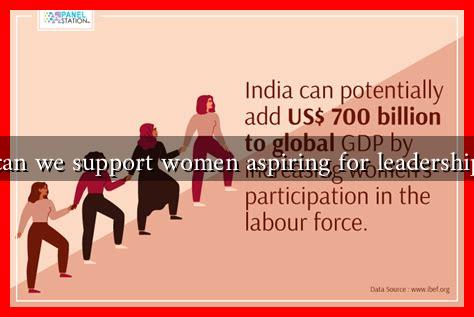-
Table of Contents
How Can We Support Women Aspiring for Leadership Roles
In recent years, the conversation around gender equality in leadership has gained significant momentum. Despite progress, women remain underrepresented in leadership roles across various sectors. According to a 2021 report by McKinsey & Company, women hold only 28% of senior vice president roles and 21% of C-suite positions in the corporate world. This article explores actionable strategies to support women aspiring for leadership roles, ensuring a more equitable future.
The Importance of Representation
Representation matters. When women occupy leadership positions, they not only serve as role models but also contribute to diverse perspectives that enhance decision-making processes. Research shows that companies with more women in leadership roles perform better financially. A study by Credit Suisse found that companies with women on their boards had higher returns on equity and better stock performance.
Creating Supportive Networks
One of the most effective ways to support women in leadership is through the establishment of robust networks. These networks can provide mentorship, resources, and opportunities for professional growth. Here are some ways to create and enhance these networks:
- Mentorship Programs: Pair aspiring women leaders with experienced mentors who can provide guidance and support.
- Networking Events: Organize events that allow women to connect with industry leaders and peers.
- Online Communities: Leverage social media platforms and professional networks like LinkedIn to create online groups focused on women in leadership.
Encouraging Skill Development
To prepare women for leadership roles, organizations must invest in skill development. This can be achieved through:
- Leadership Training: Offer workshops and training programs that focus on essential leadership skills such as negotiation, public speaking, and strategic thinking.
- Continuous Education: Encourage women to pursue further education, certifications, or specialized training relevant to their fields.
- Project Opportunities: Provide opportunities for women to lead projects or initiatives, allowing them to gain practical experience.
Promoting Work-Life Balance
Work-life balance is crucial for women aspiring to leadership roles, especially those with family responsibilities. Organizations can support this balance by:
- Flexible Work Arrangements: Implement policies that allow for remote work or flexible hours.
- Parental Leave Policies: Offer generous parental leave and support for both mothers and fathers.
- Childcare Support: Provide on-site childcare or subsidies for childcare expenses.
Addressing Bias and Discrimination
To create an equitable environment, organizations must actively work to eliminate bias and discrimination. This can be achieved through:
- Bias Training: Conduct training sessions to raise awareness about unconscious bias and its impact on decision-making.
- Transparent Promotion Processes: Ensure that promotion criteria are clear and accessible to all employees.
- Diversity Metrics: Regularly assess and report on diversity metrics to hold leadership accountable.
Case Studies of Successful Initiatives
Several organizations have successfully implemented initiatives to support women in leadership. For instance:
- Salesforce: The tech giant has committed to equal pay and has invested in leadership development programs specifically for women.
- Unilever: Unilever has set a target to achieve gender balance in management and has implemented various programs to support women’s career advancement.
Conclusion
Supporting women aspiring for leadership roles is not just a moral imperative; it is a strategic advantage for organizations. By creating supportive networks, encouraging skill development, promoting work-life balance, and addressing bias, we can pave the way for a more inclusive leadership landscape. As we continue to champion these initiatives, we move closer to a future where women are equally represented in leadership roles, driving innovation and success across all sectors.
For more insights on gender equality in leadership, visit McKinsey & Company.


